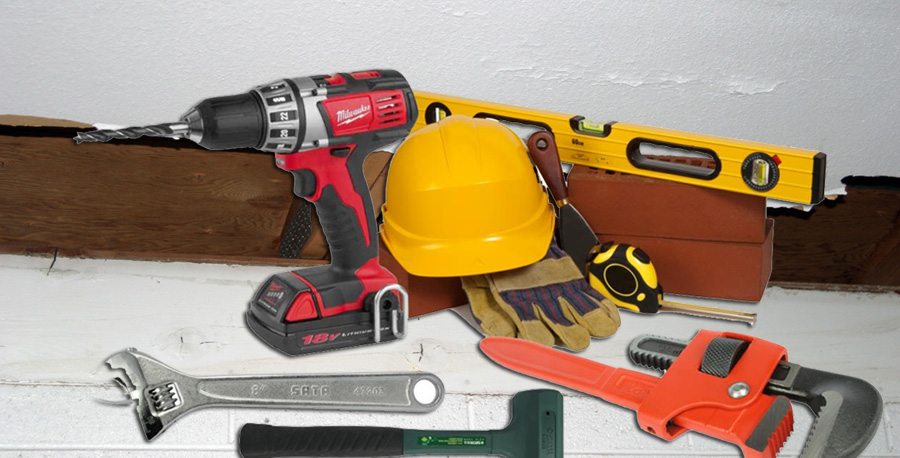Bigger and more expensive projects, rising new home prices, curb appeal and energy efficiency all contributed to a slight gain in remodeling projects’ payback at resale, with an average return of 64.4 percent return if the home is sold within a year. That’s up from 62 percent in the 2015 report and the second-highest return in the past eight years, according to REMODELING Magazine’s recently released 29th annual Cost vs. Value Report.
The 2016 report, which compares changes in home improvement costs – both nationally and regionally — with real estate professionals’ perceptions of what those projects will contribute to a home’s price at resale, reflects that better times are yielding higher returns. Of the 25 projects for which the real estate pros increased the estimated payback targets, many of the largest percentage gains were for higher-dollar “upscale” projects which are more complicated than baseline mid-range projects.
Craig Webb, editor-in-chief of Hanley Wood’s REMODELING and lead author of the 2016 Cost vs. Value Report notes that “more often than not, real estate professionals raised their estimates because their views on the value of remodeling are closely tied to the state of the local real estate market, which through last October has enjoyed a 5.9 percent increase from the year earlier – and, according to the National Association of REALTORS®, that’s on top of a 5.7 percent gain for 2014.”
In 2016, the top five recouping projects nationally are:
Under $5,000: Mid-range Fiberglass Attic Insulation (116.9%); Mid-range Steel Entry Door Replacement (91.1%); Mid-range Garage Door Replacement (91.5%); Upscale Fiberglass Entry Door Replacement (82.3%); Upscale Garage Door Replacement (90.1%)
$5,000 – $25,000: Mid-range Manufactured Stone Veneer (92.9%); Upscale Fiberglass Grand Entrance (69.6%); Mid-range Wood Deck Addition (75%); Mid-range Vinyl Siding Replacement (73.2%); Mid-range Back-up Power Generator (59.4%)
$25,000 – $100,000: Upscale Composite Deck Addition (57.7%); Mid-range Bathroom Addition (56.2%); Upscale Bathroom Remodel (57.5%); Mid-range Major Kitchen Remodel (64.9%); Mid-range Basement Remodel (70.4%)
$100,000 +: Mid-range Family Room (67.9%); Mid-range Master Suite Addition (64.1%); Upscale Major Kitchen Remodel (61.5%); Mid-range Two-Story Addition (69.3%); Upscale Master Suite Addition (57.2%)
Trend highlights:
- Attic insulation project tops the list at an average cost of $1,268, which increases the home’s retail value by an average of $1,482 – a whopping $116.90 return for every $100 invested.
- Manufactured stone veneer again came in second with a 92.9% return, followed by the midscale garage door replacement at 91.5%, a steel entry door replacement (last year’s No. 1) at 91.1% and the upscale garage door replacement at 90.1%.
- Replacement jobs such as door, window and siding projects — averaged a return of 61.5% while remodeling projects scored 57.3%.
- Curb appeal projects reign supreme – 12 of the 15 highest scoring projects were for work done on the exterior of the home.
- As a general rule, the simpler and lower-cost the project, the bigger its cost-value ratio; four of the five projects that cost less than $5,000 for a pro to do were ranked in the top five for cost recouped.
- The upscale project which had the biggest percentage gain was the fiberglass entry door, up 21.2%; then came the two-story addition, an 8.1% higher recoupment than in 2015, followed by the master suite (up 6.5%) and the major kitchen remodel (up 4.2%) – see page 40 for the entire list.
- The five projects with the worst returns are mid-range bathroom addition, upscale bathroom addition, upscale master suite, upscale bathroom remodel and composite deck addition.
- This year’s 64.4% deserves an asterisk because the 2016 report eliminates eight projects from last year, including some with the weakest returns, while adding two projects, one of which – attic insulation – topped the list. But if you look at the 17 projects we’ve tracked since 2005, the results are similar.
- For the 17 projects tracked in the past, the average value recouped was 63.7%, up from 62.1% in the 2015 report and the second-best year in the past six.
- When you look at cost alone, regardless of whether you’re talking about the 17 perennials or all 28 projects that were in the 2015 and 2016 reports, the result was the same: The average project cost 4.7% more this year.
- When real estate professionals were canvassed for their view of how much that project boosted a home’s value at resale within a year, the results varied according to which projects you included. For the 28 jobs tracked both years, real estate professionals estimated the average project’s dollar return was 6.7% higher in this year’s report than in 2015. For just the 17 perennials, the gain in value was 7.3%.
- Those differences give only a first sense of why Cost vs. Value isn’t so much a portrait of America’s remodeling industry as it is a kaleidoscope—one in which the view of our remodeling industry changes every time you turn the data wheel.
- Because costs change independently from real estate pros’ assessment of value (and for our 17 perennial projects, they’ve moved in different directions six of the past 10 years), each year the resulting cost-value ratio will have a different reason for why it changed. This ratio expresses resale value as a percentage of construction cost: When cost is higher than value, the ratio is less than 100%; when value is higher than cost, the ratio exceeds 100%. It’s the “bang-for-the-buck” meter.
- In last year’s report, the overall cost-value ratio went down from the previous year because valuations were cut on about half of the 36 projects. This time, the average return went up largely because real estate professionals were more optimistic, lowering their estimates of resale value on only five of the 30 projects surveyed.
Source: www.hanleywood.com
Reprinted with permission from RISMedia. ©2016. All rights reserved.
Home Buyer’s Frequently Asked Questions
Home Seller’s Frequently Asked Questions


